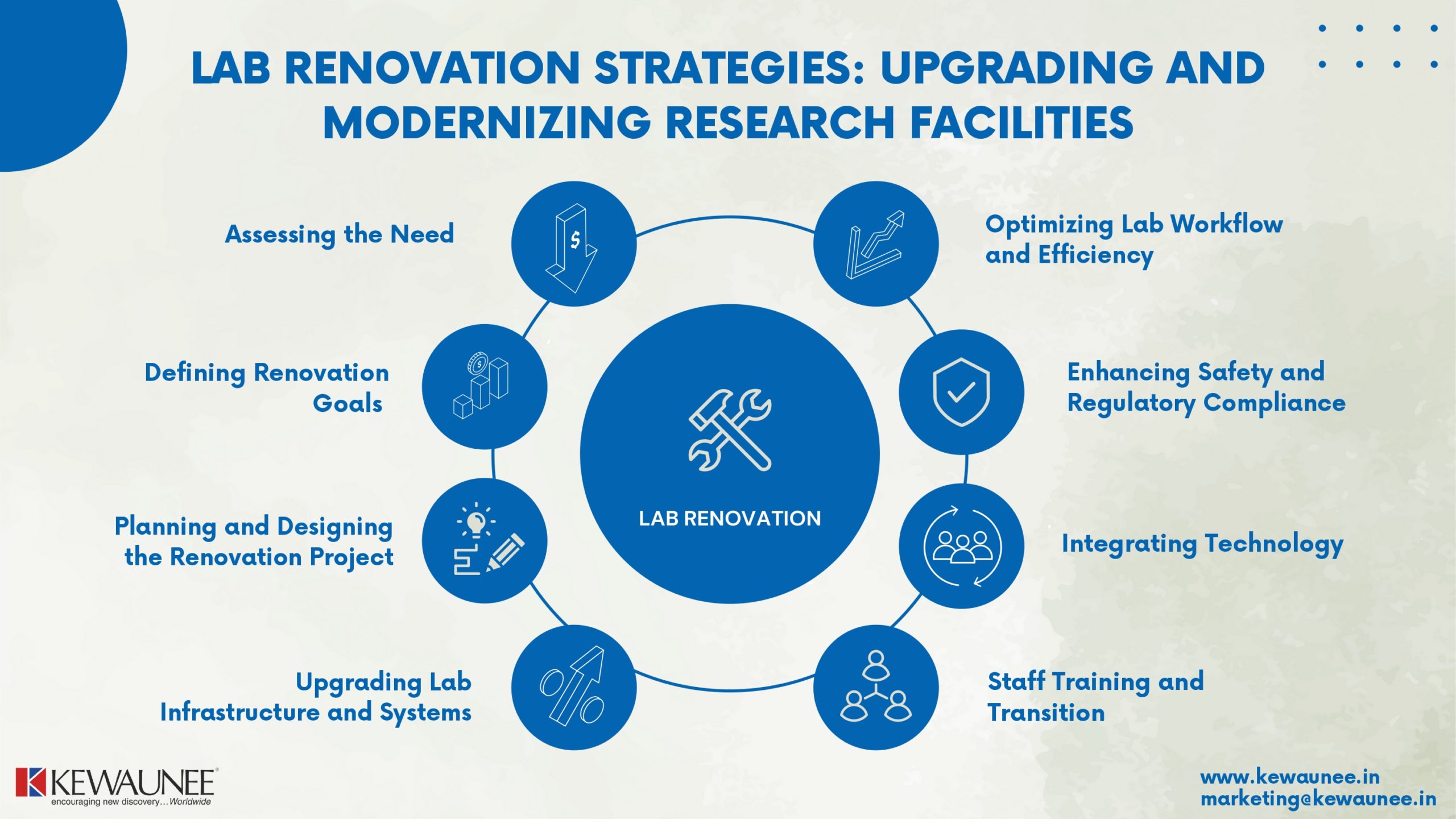Lab Renovation Strategies: Upgrading and Modernizing Research Facilities
In the fast-paced world of scientific research, staying at the forefront of innovation requires more than just brilliant minds and cutting-edge technology. The physical environment in which research takes place plays a crucial role in driving productivity, efficiency, and breakthrough discoveries.
Lab renovation is a strategic approach that enables research facilities to upgrade and modernize their infrastructure to meet the evolving needs of scientific exploration.
In this comprehensive guide, we will explore the importance of lab renovation, discuss key strategies for upgrading research facilities, and provide insights into the maintenance practices that will help sustain a state-of-the-art environment.
I. Assessing the Need for Lab Renovation
To embark on a successful lab renovation journey, it is essential to first identify the signs that indicate the need for renovation. Outdated infrastructure, inadequate safety features, and inefficient workflow processes can hinder research productivity and limit the potential for scientific advancements.
By assessing the existing lab environment, research facilities can pinpoint areas that require improvement and prioritize upgrades that align with their research goals and objectives.
II. Defining Renovation Goals and Objectives
Before diving into a lab renovation project, it is crucial to define clear goals and objectives. Research facilities must establish the project scope, set realistic timelines, and consider budgetary constraints.
By understanding the desired outcomes of the renovation, research facilities can develop a comprehensive plan that addresses their specific needs and ensures the successful completion of the project within the allocated resources.
III. Planning and Designing the Renovation Project
Effective planning and design are the foundations of a successful lab renovation. Collaborating with lab design experts and contractors who possess specialized knowledge and expertise in research facility renovations is essential.
Through careful consideration of workflow processes, space utilization, and sustainable design principles, research facilities can create a well-designed environment that promotes productivity, collaboration, and innovation.
IV. Upgrading Lab Infrastructure and Systems
Modern research facilities require state-of-the-art infrastructure and systems to support cutting-edge research. Upgrading HVAC and air quality systems ensures the maintenance of optimal conditions within the lab, controlling temperature, humidity, and particle levels.
Upgrading electrical and lighting systems enhances safety, energy efficiency, and provides adequate lighting for precision work. By integrating advanced data and communication infrastructure, research facilities can support efficient data management, collaboration, and the integration of emerging technologies.
V. Optimizing Lab Workflow and Efficiency
Efficient workflow processes are crucial for maximizing productivity and accelerating research outcomes. Through strategic lab layout redesign, research facilities can minimize unnecessary movements, improve workflow efficiency, and optimize space utilization.
Upgrading workstations and furniture with ergonomic support enhances the comfort and well-being of researchers, reducing the risk of work-related injuries and fatigue. The integration of automation and digital solutions streamlines processes, reduces human error, and frees up valuable time for researchers to focus on their core scientific activities.
VI. Enhancing Safety and Regulatory Compliance
Safety is a top priority in any research facility. During the lab renovation process, research facilities must prioritize the enhancement of safety features and equipment. This includes the integration of advanced safety systems, such as emergency response mechanisms and adequate personal protective equipment (PPE).
Compliance with industry standards and regulations ensures the integrity of research and safeguards the well-being of researchers and staff.
VII. Integrating Technology and Innovation
Embracing technology and innovation is paramount for research facilities to stay at the forefront of scientific advancements. Integrating advanced lab equipment and instruments enables researchers to access cutting-edge technologies, improving the accuracy and efficiency of experiments.
By implementing data management and analysis systems, such as laboratory information management systems (LIMS), research facilities can efficiently handle and analyze vast amounts of research data, accelerating discoveries and promoting collaboration among researchers.
VIII. Managing the Renovation Process
Successful renovation projects require effective management and coordination. Research facilities must oversee the construction process, monitor project progress, and address any challenges that may arise.
Quality control measures and final inspections ensure that the renovated lab meets the desired standards and specifications outlined in the initial plan.
IX. Staff Training and Transition to the Renovated Lab
Transitioning to a renovated lab requires comprehensive staff training. Research facilities must provide thorough training on new equipment and technologies, ensuring that researchers and staff are well-versed in their usage and safety protocols.
Proper preparation and support during the transition phase help minimize disruptions and ensure a smooth and efficient restart of research activities.
X. Maintaining and Sustaining the Renovated Lab
To preserve the effectiveness of a renovated lab, regular maintenance and sustainability practices are crucial. Research facilities must establish a comprehensive maintenance schedule, including routine cleaning, equipment calibration, and safety inspections.
Continuous monitoring of lab performance, energy usage, and efficiency helps identify areas for improvement and ensures that the lab remains optimized to meet the evolving needs of scientific research.
XI. Conclusion
Lab renovation is a strategic investment that enables research facilities to upgrade their infrastructure, enhance safety features, optimize workflow processes, and integrate advanced technologies.
By following the strategies outlined in this guide, research facilities can create state-of-the-art environments that foster productivity, collaboration, and innovation. Lab renovation is not just about physical upgrades; it is a commitment to support groundbreaking discoveries and contribute to the advancement of knowledge. Embrace the power of lab renovation and position your research facility at the forefront of scientific excellence.
Comments are closed.











